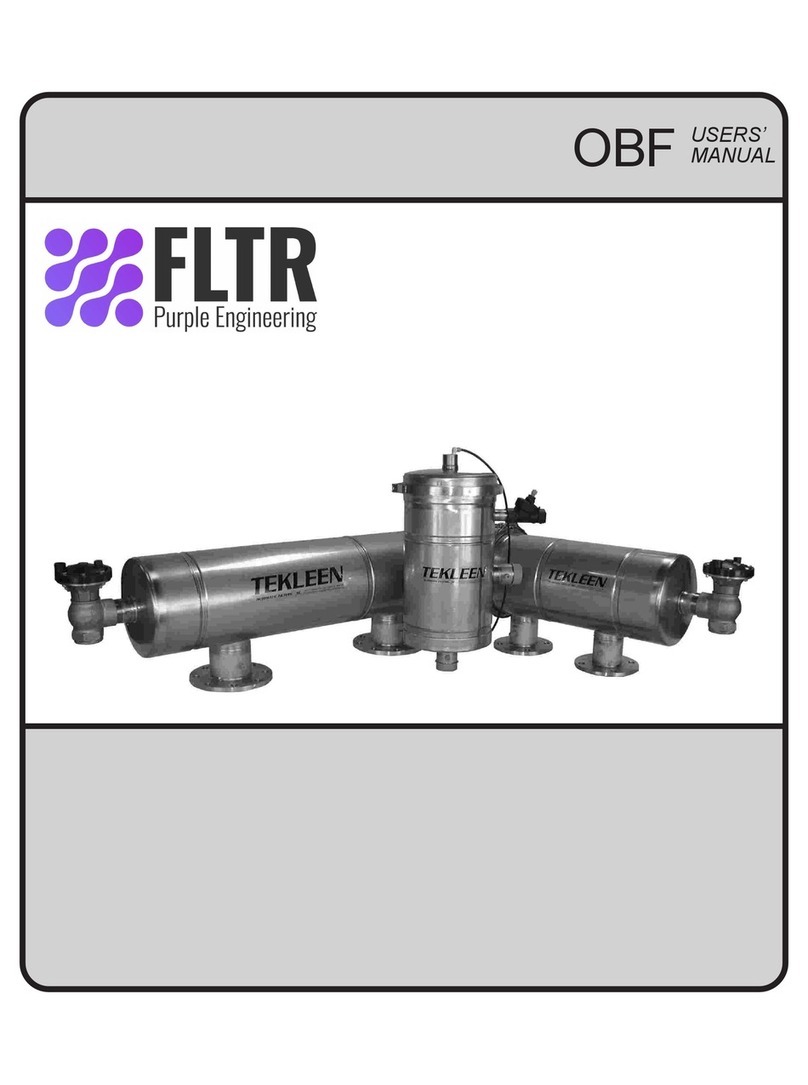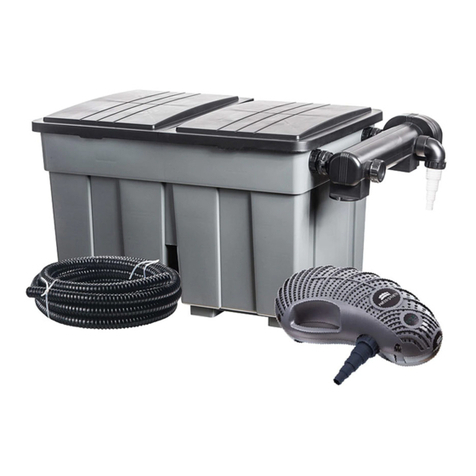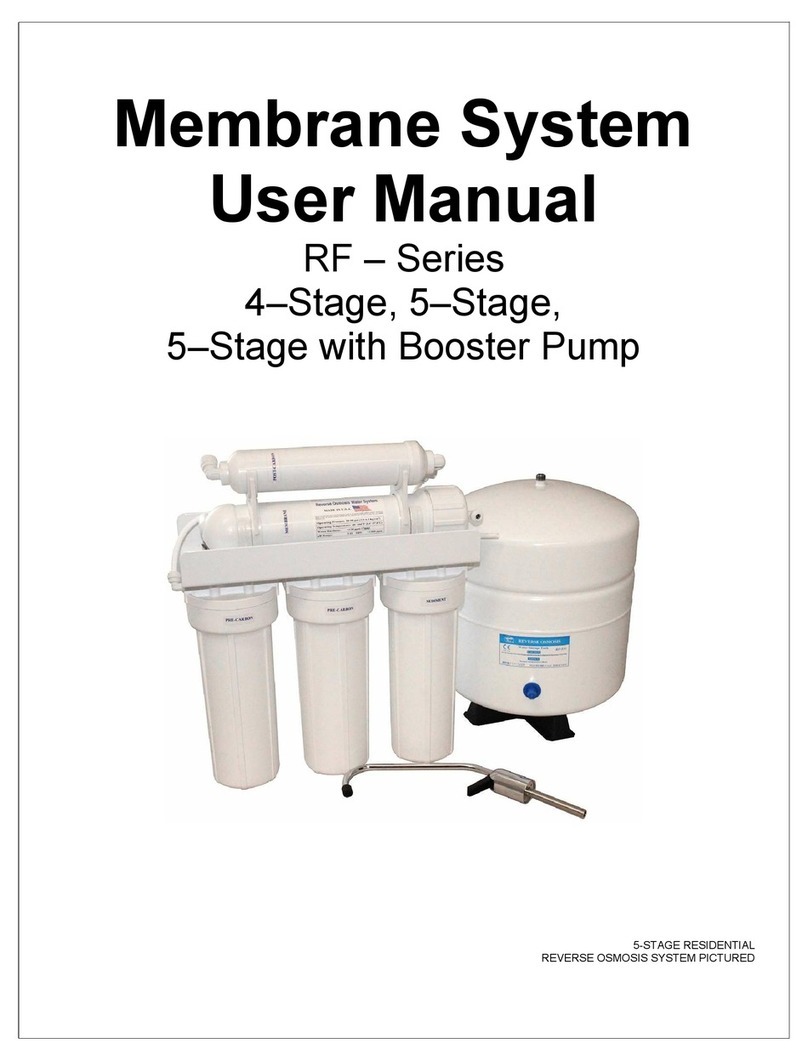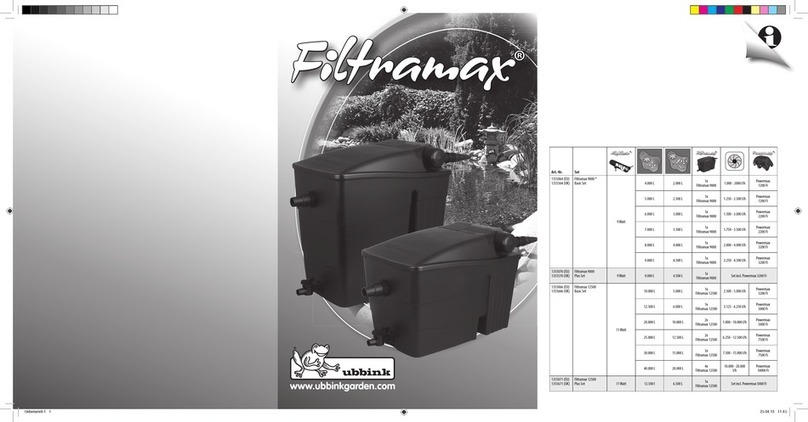10
PROBLEM CAUSE SOLUTION
The high-pressure cleaner
does not start
•power supply plug is not
inserted correctly.
•Fuse in socket has blown.
•Other cause
•Replace correctly.
•Replace with a new 13 A
fuse.
•Contact a skilled technician.
The high pressure cleaner
vibrates a lot and is noisy
•The water filter is dirty
•Insufficient water supply.
•Valves worn blocked or
dirty
•Clean or replace.
•Check water tap is open.
•Contact skilled Technician
Cleaner does not reach high
pressure.
•Side handle turned for low
pressure.
•Nozzle is worn.
•Other Cause
•Set for high pressure as per
instructions.
•Replace nozzle.
•Contact skilled Technician.
Poor suction of detergent. •Detergent tank empty.
•Detergent is too thick in
viscosity.
•Detergent Flow control
incorrectly set
•Fill tank with detergent.
•Dilute detergent with water.
•Adjust according to pg 6 FIG B
When starting the motor hums
but doesn’t start up.
•Mains power supply below
requirements.
•Faulty start capacitor.
•Pump blocked or frozen
•Check mains supply.
•Replace capacitor.
•Contact skilled technician.
Motor stops during use. •Thermal protector cut in.
•Mains supply fuse blown.
•Allow cleaner to cool down
and reset thermal protector.
•Replace fuse.
No water comes out of nozzle •No water connected to
cleaner
•Suction depth too high (if
sucking instead of mains
supply)
•Blocked water filter
•Connect or turn on water
supply.
•Reduce suction height.
•Clean water filter see
maintenance section of this
manual
TROUBLE SHOOTING
3
SAFETY INSTRUCTIONS
The high pressure cleaner must be used with care and attention. It is your responsibility to make
sure that all new users have read these instructions and are familiar with the operation of the
high-pressure cleaner. Otherwise do not allow others to use the high pressure cleaner.
•High-pressure cleaners must not be used by children or by unauthorised personnel.
•Comply with the safety warnings in the operating and maintenance instructions of any
optional accessories to be used.
•Do not use the high pressure cleaner if:
- the power supply cable or other important parts such as the high pressure pipe, the safety
devices, the cleaner gun and the lance are damaged;
- the high pressure cleaner has been tipped over or has been bumped;
- there are obvious leaks of water.
In these circumstances, the high-pressure cleaner should be tested by a Skilled Technician.
•It is especially important to pay great attention when the high pressure cleaner is used in
areas where there are moving vehicles as these can crush or damage the power supply
cable, the high pressure pipe, the cleaner gun etc.
•During operation, never leave the high-pressure cleaner unattended and make sure it is out
of children’s reach. Pay particular attention when in areas unsupervised children, elderly
people and disabled people may be present.
•Before using the high-pressure cleaner, make sure it is in a dry place and that it is in a flat
and stable position in order to avoid accidents and prevent it from falling over.
•Before moving the high-pressure cleaner, follow the instructions in the “Switching off”
section.
•Before starting the high-pressure cleaner, put on clothing which guarantees adequate
protection against the possibility of incorrect manoeuvres of the jet of pressurised water.
•Do not operate the high-pressure cleaner near people unless they are also wearing
protective clothing.
•High-pressure jets of water can be dangerous if they are not used properly. Do not point the
jet in the direction of people, animals, and energized electrical appliances or towards the
high-pressure cleaner itself.
•Hold the cleaner gun firmly during use: when operating the lever (9), the operator is
subjected to the backlash of the high pressure. The power of this recoil is indicated in the
table of technical specifications (recoil is expressed in N, where 1 N = 0.1 kg).
•Do not point the jet towards oneself or other people in order to clean off clothing or
footwear.
•Vehicle tyres must be cleaned at a distance of at least 50 cm to safeguard them from being
damaged by the high-pressure jet. The first evidence of damage to a tyre is a change in
colour.
•Do not point the high-pressure jet towards materials, which contain asbestos or other
harmful substances.
•Do not use the high-pressure cleaner in the rain.
•Pay particular attention to the instructions in the “Controls and connection to the mains
electricity supply” section.
•Pay particular attention to the instructions in the “Use with detergents” section.
•When the high-pressure cleaner is not in use, unplug from the mains power. More precisely,
make sure that the mains switch (1) is in position "0", remove the plug from the power
outlet, press the lever (9) on the cleaner gun to eliminate any remaining pressure and bring
the safety catch in its locked position (10) (Fig.B):























